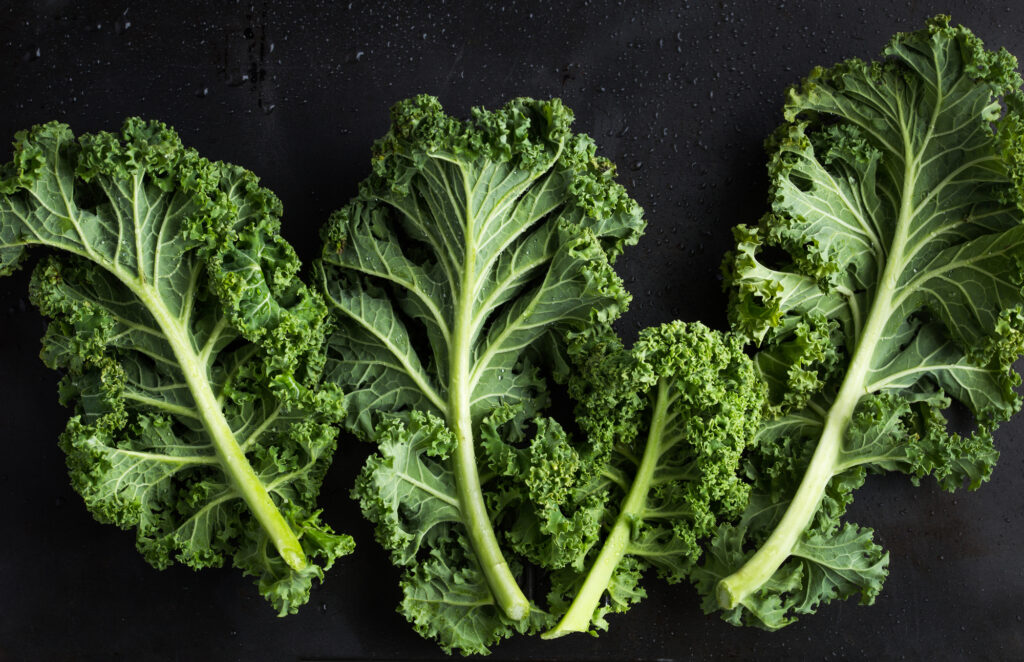Are you missing the possibility of oxalates contributing to your patient’s fatigue, inflammation, pain, or chronic infections? In the absence of kidney stones, dietary oxalate has been overlooked as a cause of common aliments for nearly 100 years.
Today’s health- and wellness-seeking patients often come to rely on oxalate-rich foods (spinach, almonds, sweet potatoes, for example) as routine staples. Health trends, busy schedules, and repetitive eating habits—often in pursuit of the perfect body—conspire to undermine our patients’ best intentions and can set them up for serious nutrient imbalances and deficiencies. Worse still, these habits can lead to a little-known toxicity syndrome.
Many seemingly nutritious foods touted as “superfoods” contain high levels of oxalic acid which can sabotage health and healing. The human body is designed to manage and excrete some oxalate but is not designed for heavy use of high-oxalate foods—that puts our health-conscious clients in harm’s way and makes them challenging to treat.
Oxalate toxicity can frustrate efforts to treat chronic pain, apparent Lyme disease, mold toxicity, osteopenia, chronic rashes, migraines, bladder pain and other urinary tract issues, sleep disorders and much more. Today’s “healthy foods” may be undermining your patients’ ability to heal.
A Small Bite of Oxalate Chemistry
Oxalic acid is made by plants and some fungi; it is important to their survival. It is corrosive and toxic. It can dissolve rust and lift mineral stains, making it an effective but hazardous industrial cleaner.
When “free” oxalic acid, a water-soluble ion, combines with mineral ions, it yields various oxalate “salts.” Calcium has a strong affinity for oxalate ions. Calcium oxalate, the predominant form of oxalate found in soils, plants, and in the human body forms insoluble solids that can linger as toxic minute crystal deposits in tissues—including the heart, thyroid, and bone marrow.
What Oxalates Do
Oxalic acid steals minerals—iron, calcium, magnesium, zinc—that your body needs. Resulting mineral deficiencies cause problems with growth, bone health, tissue maintenance, and reproductive success.
Digestion
Oxalate crystals can abrade and corrode digestive system linings, potentially causing leaky gut or inflammatory gastrointestinal diseases. The needle-shaped calcium-oxalate crystals are known to perforate mucus membrane cells. Meanwhile, oxalic acid in foods is absorbed from the stomach and the upper small intestine. Once in the blood stream, oxalic acid gains the power to disrupt functions of cells throughout the body.
“Even healthy cells can be overwhelmed when oxalate levels are high. The resulting toxic overload can cause or aggravate health problems and prevent their resolution.”
Kidneys and Elsewhere
The body has no way to metabolize or otherwise disarm oxalic acid but can only excrete it. In fact, the liver produces small amounts of oxalic acid. Healthy (and non-regenerating) tissues and cells can work to prevent crystal formation and attachment or dismantle calcium oxalate crystals so they may be excreted. But inflamed, infected, injured, or regenerating tissues are vulnerable to oxalate accumulation. Even healthy cells can be overwhelmed when oxalate levels are high. The resulting toxic overload can cause or aggravate health problems and prevent their resolution.
As oxalates move into and through the bloodstream, they migrate into other tissues and tend to stick to cells and tissues that are inflamed, injured, infected, and regenerating. Oxalate adhesion to tissues is escalated when levels are high which is more likely when they overwhelm the kidneys’ ability to filter them out, as can happen following high oxalate meals. Under these conditions, oxalate micro- and nano-crystals may collect in any body tissue—in joints, glands, eyes, bones, in the kidneys themselves (as diffuse nephrocalcinosis or kidney stones), and even in arterial plaque.
Various studies demonstrate that oxalate exposure can cause damage even when micro-crystals don’t develop or persist. Both the acute exposure to oxalic acid following meals and the subsequent crystal accumulation can cause generalized problems involving oxidative stress, poor cellular energetics, poor immune function (chronic reoccurring infections), and tissue inflammation.
Symptoms of oxalate overload develop slowly and may show a seemingly random waxing and waning tendency. Digestive, immune, neurological, and the urinary systems can suffer. Likewise, connective tissue integrity and maintenance are compromised. Patients may complain of overall malaise, gastritis, recurring infections, poor sleep, poor concentration, joint swelling, pain and stiffness, muscle pain, tendonitis, and other inflammatory conditions.
Tissue Damage and Immune System Stress
Soluble oxalates have many negative effects on cells and body tissues such as depleting the antioxidant glutathione. Membrane damage has a cascade of effects on cells and sub-cellular organelles, including mitochondrial dysfunction creating inflammation and energy issues that cause cell death. Resulting nerve cell damage causes functional problems throughout the nervous system, increasing vulnerability to infections and autoimmune symptoms by inciting an over-active, pro-inflammatory immune state.
A Look at Oxalate Illness
Outward signs that oxalates are interfering with bodily maintenance and regulation of are non-specific, but in the context of leaky gut, bariatric surgery, or a high oxalate diet, they are telling. The diverse and extensive effects and their severity vary widely from person-to-person, which may reflect a person’s unique history of exposure, including:
- timing of intake of high oxalate foods with developmental stages / age
- constancy of exposure
- states of wellness, inflammation, or infection at the time of exposure
- a condition of injury (accidental or surgery) or overuse in some area(s) of the body
- levels of physical or emotional stress
- gut health, gut permeability, and gut microbiome status (history of NSAID and antibiotic use or bariatric surgery)
- kidney function
Other sources of the varied individual expressions of this disease have not been thoroughly researched. However, unique vulnerabilities likely involve constitutional or metabolic tendencies and factors influencing genetic expression.
Health Food Trends and Troubles
As I state in my book, Toxic Superfoods, many of the dietary shifts steering us toward greater oxalate consumption also make it more likely that we will become deficient in key nutrients. This is clearly a problem because toxicity and deficiency are difficult to measure and tend to remain overlooked and uncorrected, making disease and accelerated aging inevitable. Ultimately, toxicity in tandem with deficiency assures human suffering.
I recommend working with patients to identify the dietary oxalate they are consuming through an inventory list of oxalate overload risk factors, symptoms, and oxalate exposure. This clinical tool helps your clients recognize the likelihood that dietary oxalate is impacting both their health and their response to treatment. My Oxalate Overload Symptoms and Exposure Inventory PDF is available for free here.

Adopting Oxalate-Aware Eating
Current preconceptions about wholesome eating make the oxalate story puzzling for both patient and provider and make it challenging for clinicians educating their clients. Even more challenging is the error-ridden oxalate data that is rampant on the internet, making it confusing for everyone looking for accurate dietary guidance for adopting oxalate-aware eating.
Thankfully, there are two pieces of good news here. The first is that lowering oxalate intake is not an all or nothing proposition. Often, just making use of a good list of worst offenders is enough to turn things around for your patients and clients. (See the Beginners’ Guide available on my website and my book, ‘Toxic Superfoods’ for helpful lists and tables.) The second piece of good news is that the need for better data is being addressed. I will soon offer a complete data guide that summarizes validated food oxalate content information in easy-to-read tables with complete references. The data guide will also include introductory material explaining how to understand, critically evaluate, and use oxalate data appropriately.
As we pursue good health outcomes for our clients, the key take-away is that we must consider oxalate toxicity as a possible contributor to—and perhaps even a root cause of—the pains and illnesses our patients face. Oxalate awareness is a critical tool for clinicians. To truly get to root causes and offer effective disease prevention strategies, we must consider and identify the potential oxalate burden in our patient care and education.
About the author: Sally Norton, MPH, received her bachelor’s degree in nutritional science from Cornell University and her master’s degree in public health from the University of North Carolina, Chapel Hill. She is the author of Toxic Superfoods: How Oxalate Overload is Making You Sick and How to Get Better. For occasional notification on research updates, sign up for Sally’s email list at Sally at sallyknorton.com.






